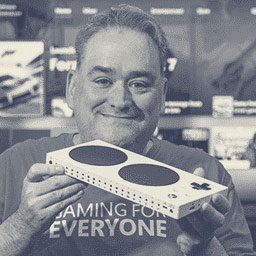Recognize Exclusion, Design for Inclusion
In your experiences, what barriers do you (inadvertently) create and who do they exclude? We’ll take you through the Microsoft Inclusive Design principles and how they were used to create the Xbox Adaptive controller and then give you some tips on how you can remove unnecessary friction from your experiences.
Before designing the Xbox Adaptive Controller the team needed to recognize the barriers that traditional controllers create for people with limited mobility. What unnecessary barriers do you (inadvertently) create, and who do they exclude? Bryce will take you through the Microsoft Inclusive Design principles and how they were used to create the Xbox Adaptive controller and then give you some tips on how you can remove unnecessary friction from your experiences.

Bryce Johnson
I have been designing accessible experiences for over 15 years. Recently working on the assistive technologies on the Xbox One, including Copilot, and as a core member of the Xbox Adaptive Controller team. I recently transitioned to Microsoft Devices, where he will work to ensuring all Microsoft hardware are designed and built to be inclusive.

John Porter
Inclusive Designer at Microsoft Design
John Porter is a user experience designer on Microsoft’s Inclusive Design team, specializing in the intersection of experiential equity, design education, human-computer interaction, and
accessibility. Additionally, he is a PhD candidate at the University of Washington in the Department of Human Centered Design & Engineering, where his dissertation research focuses on video game accessibility. When not designing, he can usually be found trying to make time for the latest games or talking about Seattle sports, technology, or his latest concert experience on twitter as @the_3.

































